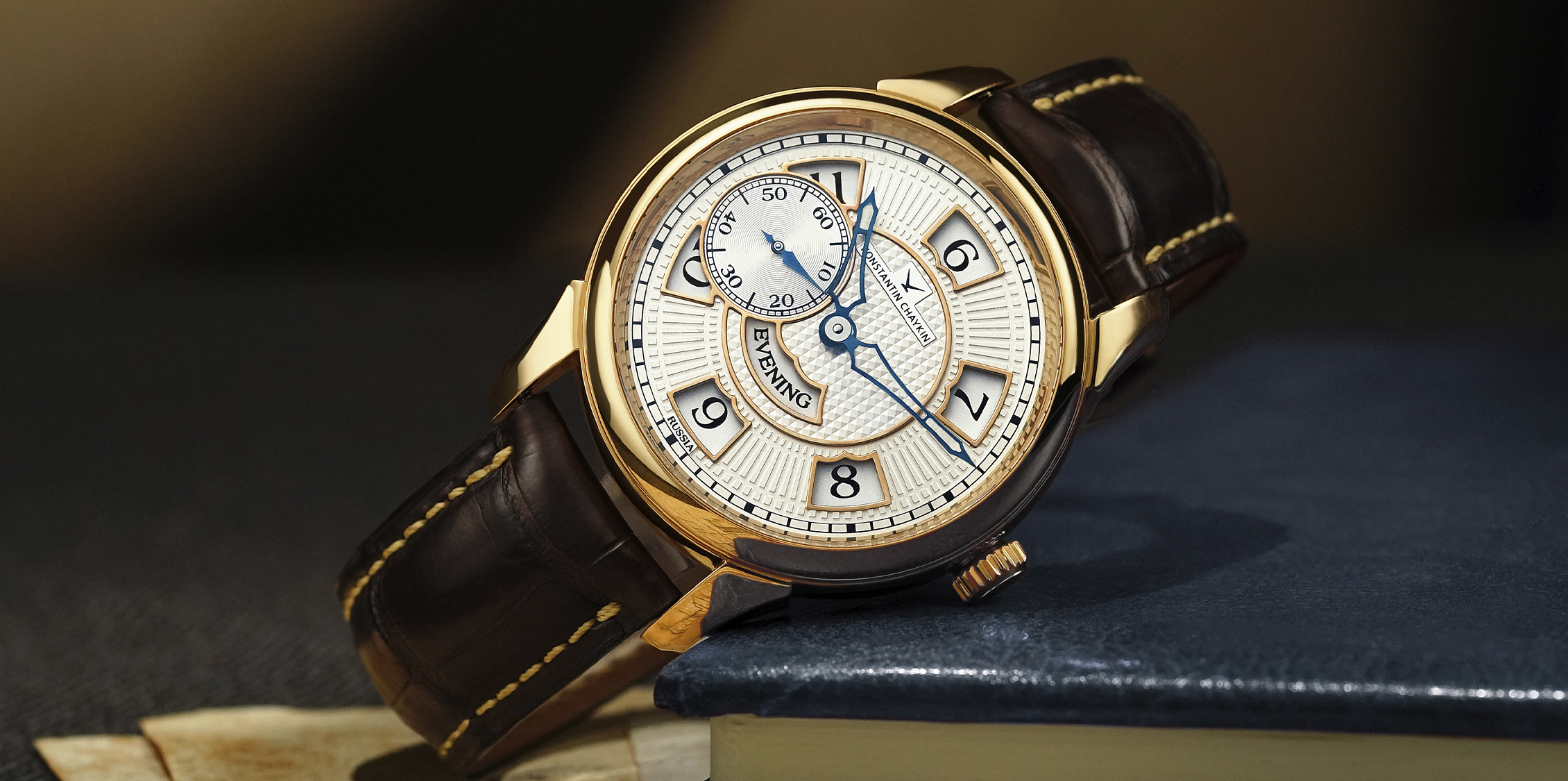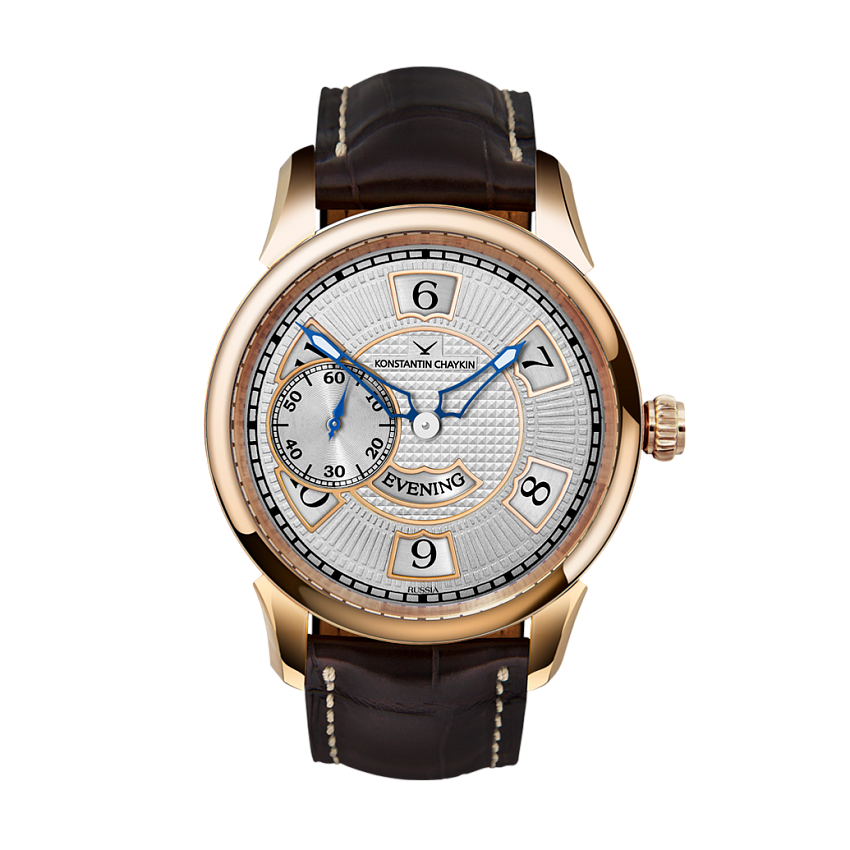
QUARTIME
We are so used to a dial with twelve fixed indices representing the hours that it seems there is no other way. However, in the “Quartime” watches there are just six hour markers, all of which move and are, in effect, replaced four times a day. A small window reveals the period of the day, telling the owner whether it is morning, day, evening or night.
Konstantin Chaykin embodied his unique vision of time in the “Quartime” watch, where the time is indicated using the “Russia Time” system he invented. The tradition of displaying the time in a 12-hour format and dividing the day into “ante meridiem” (a.m., “before noon”) and “post meridiem” (p.m., “after noon”), dates back to the earliest devices used for telling the time – the sundial. This measures the time according to the length and direction of the sun’s shadow and could, therefore, only be used in daylight.
One of the first to start measuring time using sundials were the Ancient Egyptians, who were accomplished astronomers. They set the hour of the day as one twelfth of the time from sunrise to sunset. However, as residents of never-sleeping metropolises know only too well, 10am and 10pm are not the same thing, yet watch dials do not show this difference. So why not subordinate the running of time into a natural routine of morning, day, evening and night?
